Figure showns two blocks P & Q kept in contact with the wall with the force F. The wall is smooth but the surfaces in between the blocks are rough, for the block to be at rest against the wall P is

F should be more than the weight of P & Q
F should be equal to the weight of P & Q
F should be less then the weight of P & Q
The system cannot be in equilibrium
The correct Answer is:D
Topper's Solved these Questions
- LAWS OF MOTIONBOOK - AAKASH SERIESCHAPTER - LAWS OF MOTIONEXERCISE - EXERCISE - II
136 Videos
- LAWS OF MOTIONBOOK - AAKASH SERIESCHAPTER - LAWS OF MOTIONEXERCISE - PRACTICE EXERCISE
108 Videos
- LAWS OF MOTIONBOOK - AAKASH SERIESCHAPTER - LAWS OF MOTIONEXERCISE - QUESTIONS FOR DESCRIPTIVE ANSWER
5 Videos
- KINETIC THEORY OF GASESBOOK - AAKASH SERIESCHAPTER - KINETIC THEORY OF GASESEXERCISE - Practice Exercise
15 Videos
- MECHANICAL PROPERTIES OF FLUIDS BOOK - AAKASH SERIESCHAPTER - MECHANICAL PROPERTIES OF FLUIDS EXERCISE - EXERCISE-3
43 Videos
Similar Questions
Figure shows two block A and B pushed against the wall with the force F . The wall is smooth but the surfaces in contact of A and B are rough. Which of the following is true for the system of blocks to be at rest againts wall?
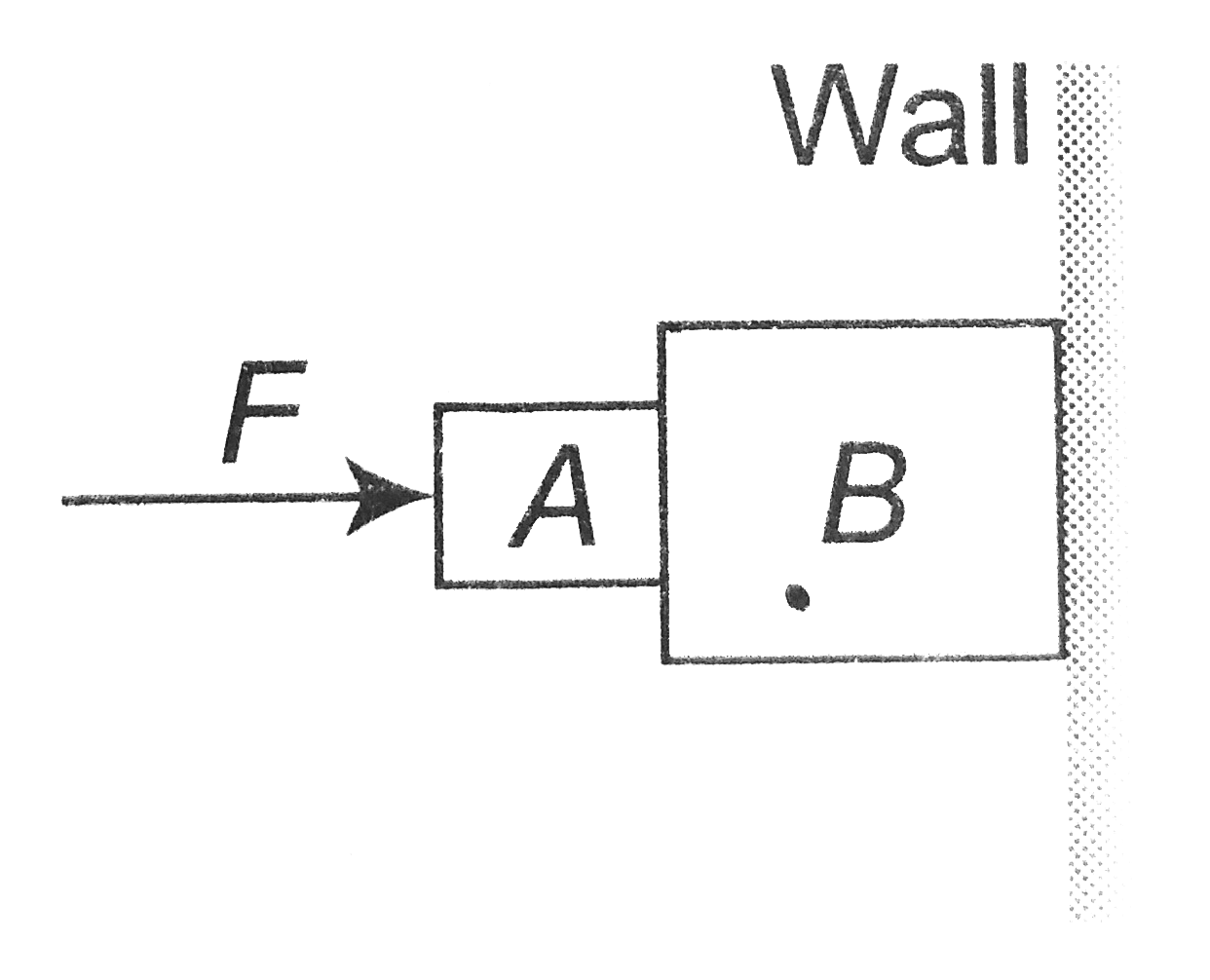
View SolutionConsider the situation shown in the figure. The wall is smooth but the surface of blocks A and B in contact are rough. The friction of B due to A in equilibrium
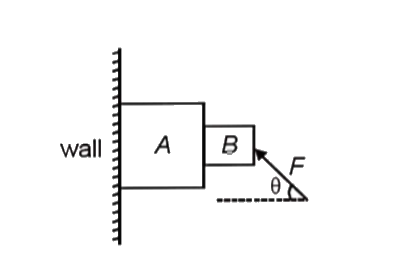
View Solution
Knowledge Check
Figure shows two block A and B pushed against the wall with the force F . The wall is smooth but the surfaces in contact of A and B are rough. Which of the following is true for the system of blocks to be at rest againts wall?
 AF should be equal to weight of A and BBF should be less than weight of A and BCF should be more than weight of A and BDSystem connot be in rquilibrium (at rest).
AF should be equal to weight of A and BBF should be less than weight of A and BCF should be more than weight of A and BDSystem connot be in rquilibrium (at rest).Consider the situation shown in the figure. The wall is smooth but the surfaces of A and B in contact are rough. Then,
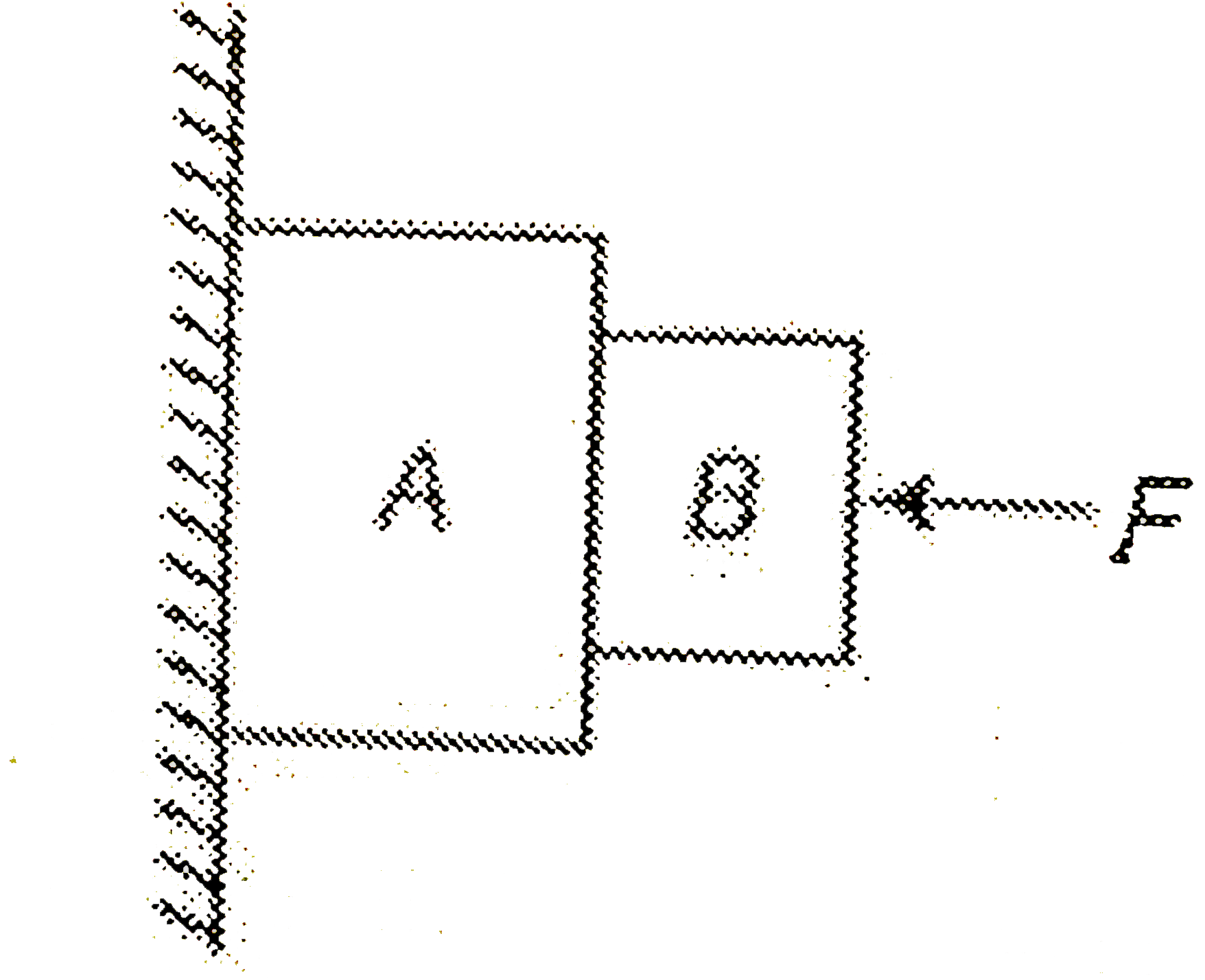 Asystem may remain in equilibriumBboth bodies must move togetherCthe system cannot remain in equilibriumDNone of the above
Asystem may remain in equilibriumBboth bodies must move togetherCthe system cannot remain in equilibriumDNone of the aboveConsider the system shown in the figure. The wall is smmoth, but the surfaces of blocks A and B in contact are rough. The friction on B due to A in equilibrium is
 AupwardBdownwardCnot definedDthe system cannot remain in equilibrium.
AupwardBdownwardCnot definedDthe system cannot remain in equilibrium.
Two blocks are kept in contact as shown in figure. Find ( a) forces exerted by surfaces ( floor and wall ) on blocks ( b) contact force between two blocks.
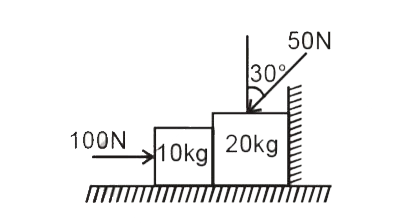
View SolutionA block of weight 30 N is in contact with a rough wall. A force of 50 N is applied as shown in the figure. Find the coefficient of static friction between the wall and the block assuming the block is just about to slip.
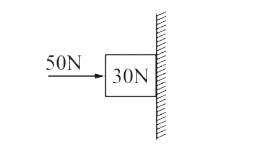
View SolutionA block of weight 30 N is in contact with a rough wall. A force of 50 N is applied as shown in the figure. Find the coefficient of static friction between the wall and the block assuming the block is just about to slip.

View SolutionA block is kept at the corner of two walls and force 3N is applied on block. If μ=0.1, between block and walls then frictional force acting on block equal to :−
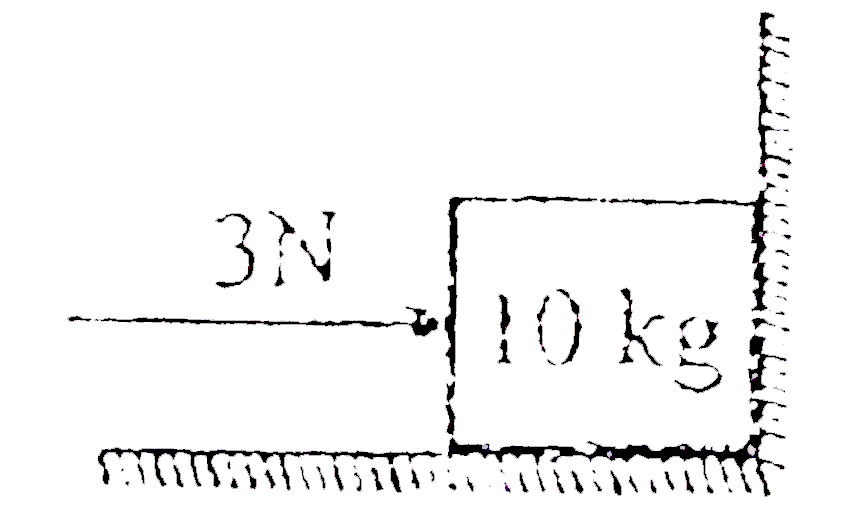
View SolutionConsider the system as shown. The wall is smooth, but the surface of block A & B in contact is rough. The friction force on B due to A equilibrium is :
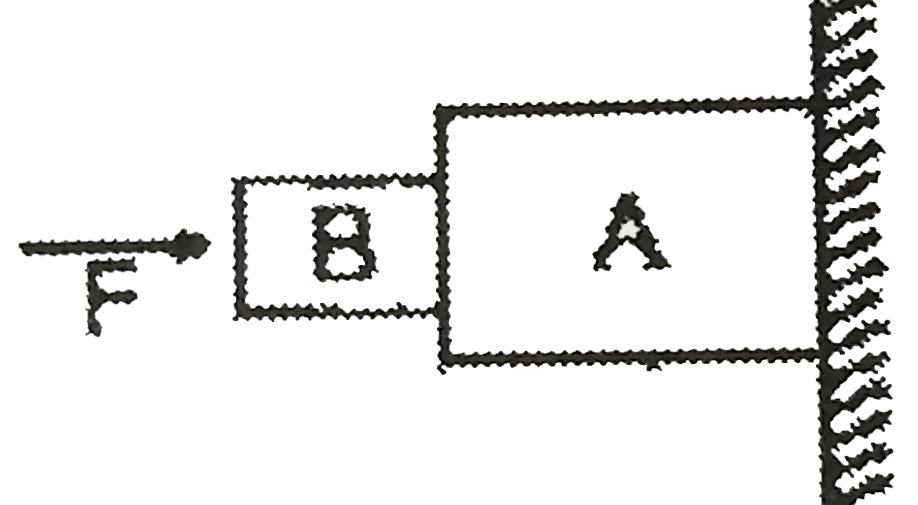
View Solution
